In an era where sustainability and innovation are highly valued, the concept of repurposing scrap wood into a stylish and functional end table has captured the attention of design enthusiasts.
This revolutionary design combines elegance with practicality, showcasing the unique character of each piece of wood.
As readers engage with this article, they will discover the inspiration behind this innovative creation, the step-by-step process of building the table, and the sustainable design principles that make it a true masterpiece.
Prepare to be inspired by the ultimate scrap wood end table.
The Inspiration Behind the Design

The design of the ultimate scrap wood end table was inspired by the desire to create an elegant and stylish piece while utilizing waste materials in an innovative way.
The inspiration behind the design came from the recognition of the vast amount of scrap wood that is often discarded and wasted. By repurposing this material, the end table not only reduces waste but also adds a unique and eco-friendly element to any space.
When choosing the perfect scrap wood pieces, careful consideration was given to the quality and character of the wood. Each piece was selected based on its grain pattern, color variation, and overall aesthetic appeal.
These factors ensure that the end table is not only functional but also visually striking, making it a true statement piece in any room.
Choosing the Perfect Scrap Wood Pieces
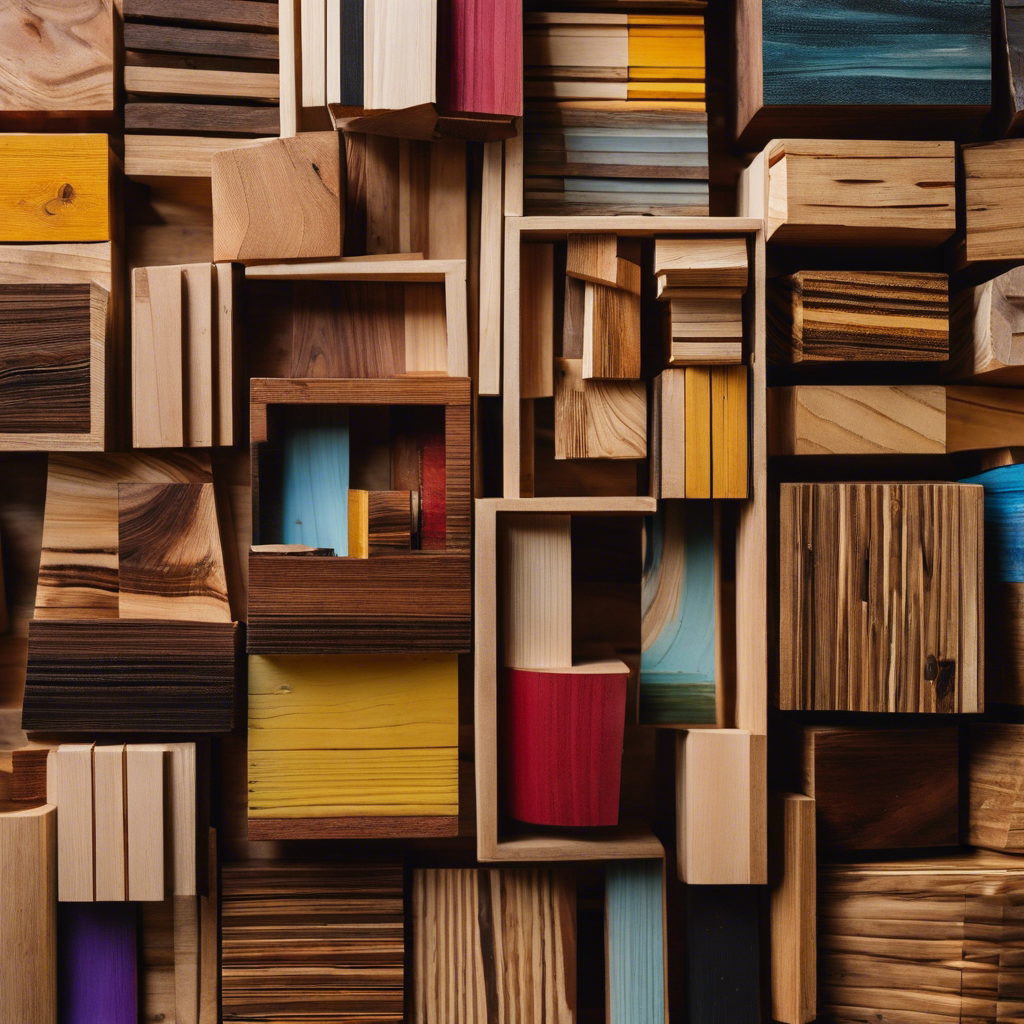
Careful consideration and discernment are crucial when selecting scrap wood pieces for the ultimate end table, as the quality and aesthetic appeal of each piece play a significant role in creating a visually striking and unique statement piece.
When choosing wood types, it is important to consider their characteristics and how they will contribute to the overall design. Maximizing materials is also a key aspect, as using scrap wood allows for sustainable and efficient use of resources.
By selecting pieces with interesting grain patterns, unique textures, and complementary colors, the end table can become a focal point in any room. Additionally, considering the durability and stability of the wood is essential to ensure the longevity of the furniture.
With careful selection and thoughtful design, a scrap wood end table can be transformed into a stunning piece that showcases craftsmanship and creativity.
A Step-by-Step Guide to Building the End Table
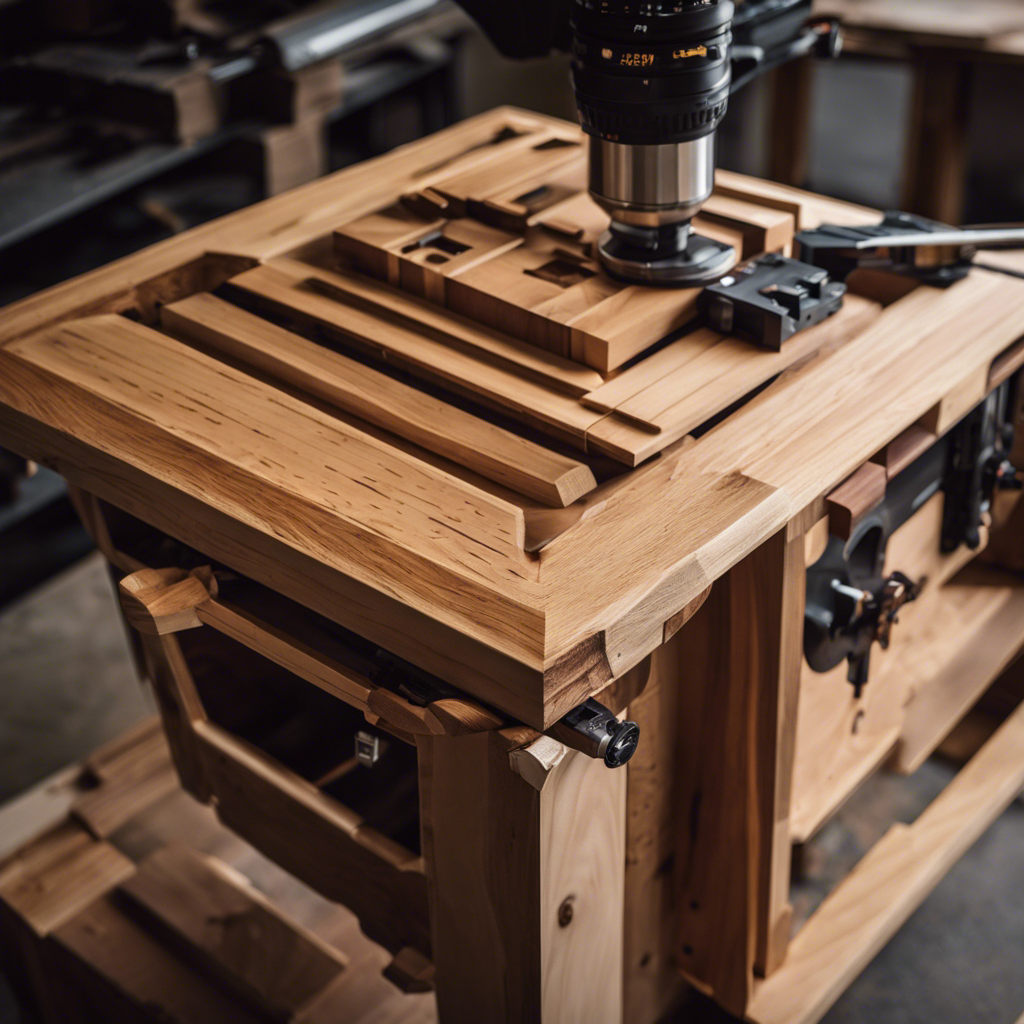
Once you have gathered all the necessary materials and familiarized yourself with the step-by-step guide, you can begin constructing the end table by carefully following the instructions. Building techniques are crucial to ensure a sturdy and durable table, and this guide will walk you through the process.
To make the construction process more enjoyable and relatable, here are five design inspirations to consider:
- Incorporate different wood species for a unique and eclectic look.
- Experiment with different finishes, such as staining, painting, or distressing.
- Add decorative accents, such as metal hardware or carved designs.
- Consider incorporating storage options, like shelves or drawers.
- Play with different shapes and sizes to create a visually appealing design.
The Innovative Joinery Techniques Used

How do the innovative joinery techniques used in constructing the end table contribute to its overall stability and durability?
The innovative joinery techniques employed in constructing the end table play a crucial role in enhancing its stability and durability. By utilizing these techniques, the table is able to withstand the test of time and resist the forces that may cause it to weaken or break.
The use of innovative joinery techniques ensures that the individual components of the table are securely connected, preventing any wobbling or movement. This not only adds to the overall stability of the table but also enhances its durability, making it capable of withstanding everyday use and potential wear and tear.
Moreover, these techniques contribute to the sustainability of the design, as they allow for the use of renewable or recycled materials, aligning with the benefits of sustainable design.
Adding a Touch of Elegance With Finishes
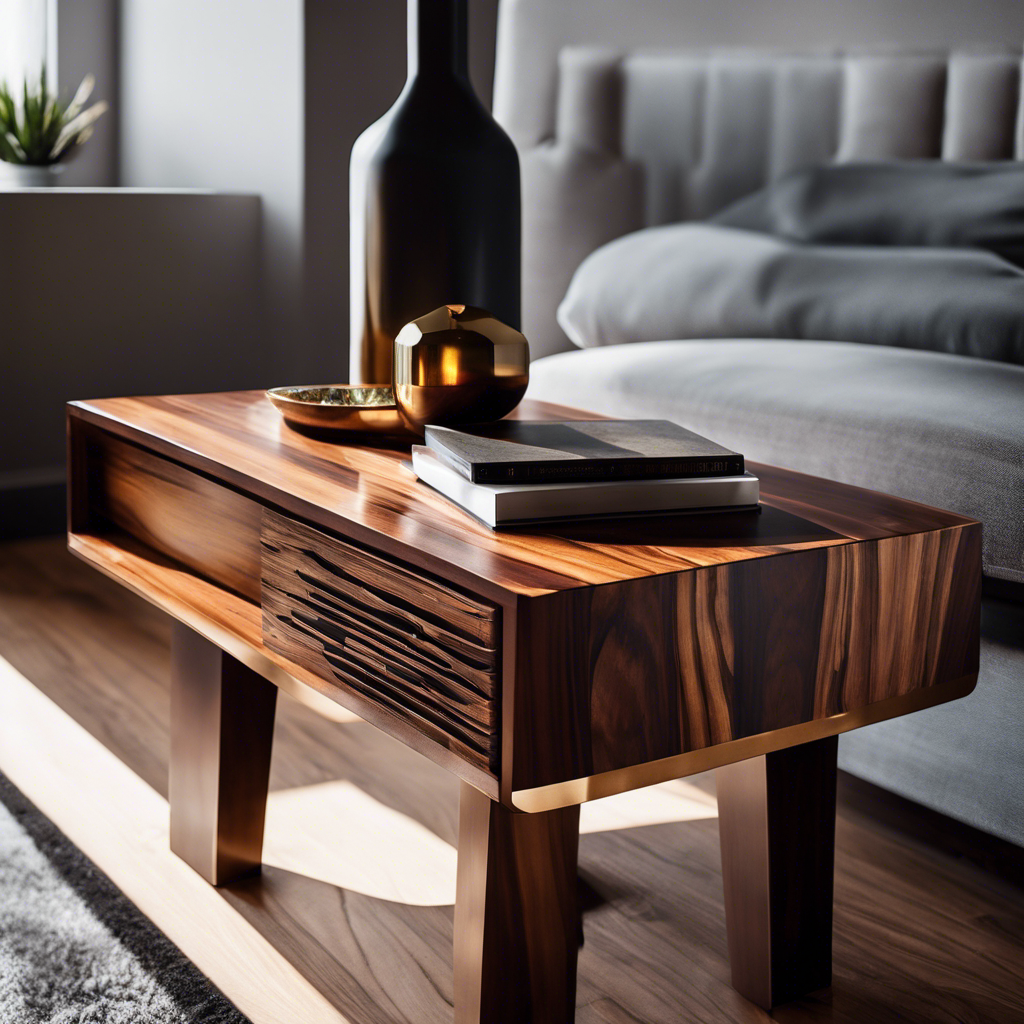
Regularly applying high-quality finishes is essential for adding a touch of elegance to furniture and ensuring its long-term beauty. The benefits of sustainable design are also evident when considering finishes, as eco-friendly options contribute to a healthier environment.
Here are five reasons why adding finishes to your furniture is a wise choice:
- Enhances the natural beauty of the wood, bringing out its unique grain patterns and color variations.
- Protects the furniture from stains, scratches, and moisture, extending its lifespan.
- Provides a smooth and polished surface that is pleasant to touch.
- Adds depth and richness to the overall aesthetic, creating a luxurious and refined look.
- Supports sustainable practices by choosing environmentally friendly finishes that are non-toxic and low in VOC emissions.
Practical and Functional Features of the Table
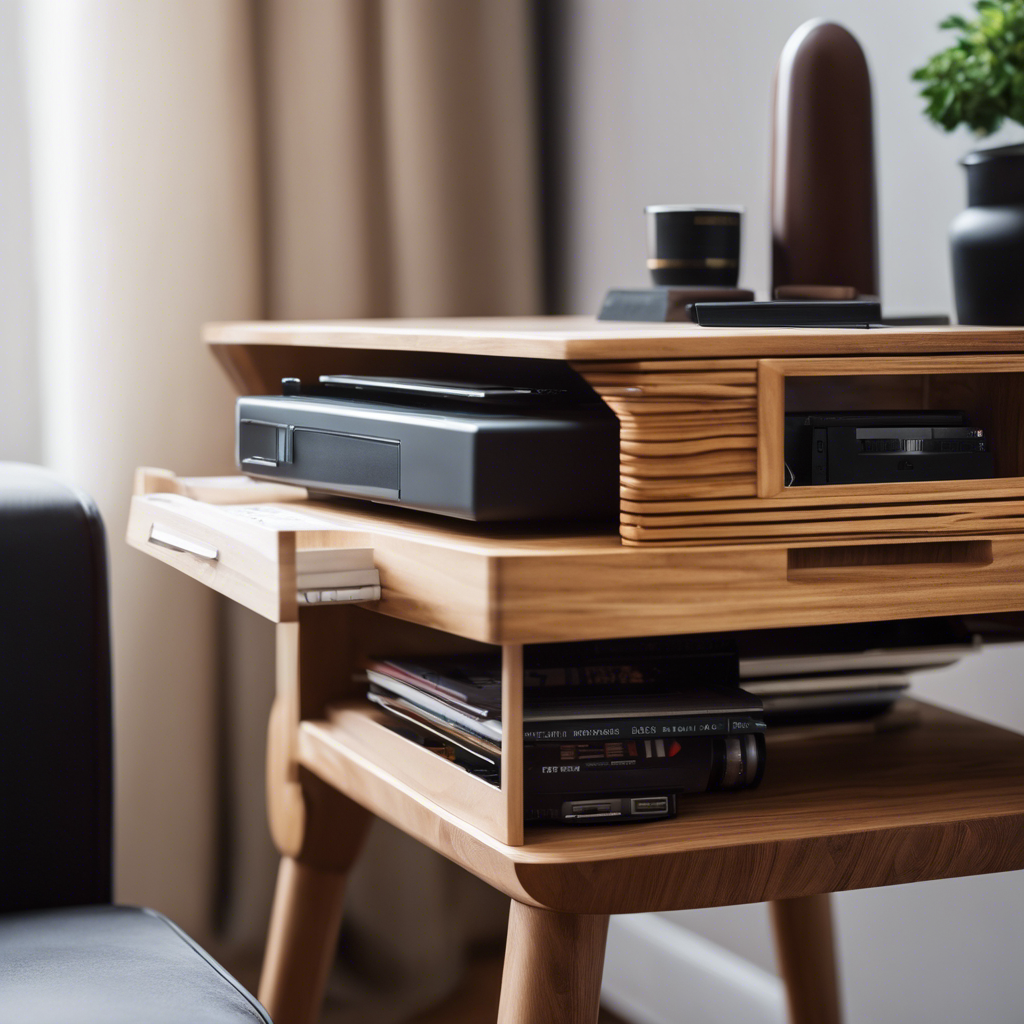
One of the most practical and functional features of the table is its versatility, as it can be used not only as an end table but also as a checkers or chess gameboard, as suggested by Ronnie and supported by MattW. This multi-purpose functionality offers numerous benefits to users.
Firstly, it maximizes the usage of space, allowing individuals to have a compact yet versatile piece of furniture.
Secondly, it adds an element of entertainment, providing a convenient and easily accessible gameboard for leisure activities.
Additionally, the dual functionality of the table enhances its aesthetic appeal, making it a visually appealing and conversation-starting piece in any room.
Moreover, the ability to transform the table into a gameboard adds an interactive element to social gatherings, fostering engagement and enjoyment among friends and family.
Overall, the versatility of this table offers a range of features and benefits that cater to the needs and preferences of users.
Sustainable Design: Making the Most of Waste Materials

By utilizing innovative techniques and repurposing waste materials, sustainable design is able to create functional and aesthetically pleasing furniture pieces that contribute to a more environmentally conscious society. This approach, known as upcycling, not only reduces waste but also promotes creativity and resourcefulness.
Here are five reasons why sustainable design is gaining popularity:
-
Environmental Impact: Upcycling materials reduces the need for new resources, minimizing the strain on the environment.
-
Unique Design: Each piece created through repurposing materials carries its own story and character, making it one-of-a-kind.
-
Cost-effective: Upcycled furniture often comes at a lower price point compared to newly manufactured items, making sustainable design accessible to a wider audience.
-
Inspiration for Innovation: By repurposing waste materials, designers are encouraged to think outside the box and come up with unique solutions.
-
Ethical Consumption: Choosing upcycled furniture supports a circular economy and encourages responsible consumption habits.
Showcasing the Unique Character of Each Piece of Wood

The intricate craftsmanship of this scrap wood end table highlights the distinctive grain patterns and natural beauty inherent in each individual piece of wood. This attention to detail not only showcases the unique wood characteristics but also brings out the true essence of the material.
By utilizing scrap wood, this design not only reduces waste but also offers numerous benefits. Firstly, using scrap wood promotes sustainability by repurposing materials that would otherwise be discarded. Secondly, the variation in wood types and colors adds a touch of uniqueness to each piece, making it a truly one-of-a-kind furniture item. Additionally, the durability and strength of wood ensure longevity, making this end table a practical and environmentally conscious choice.
Embracing the inherent beauty of each piece of wood, this design serves as a testament to the value and potential of using scrap wood in furniture construction.
The End Table: A Conversation Starter in Any Room
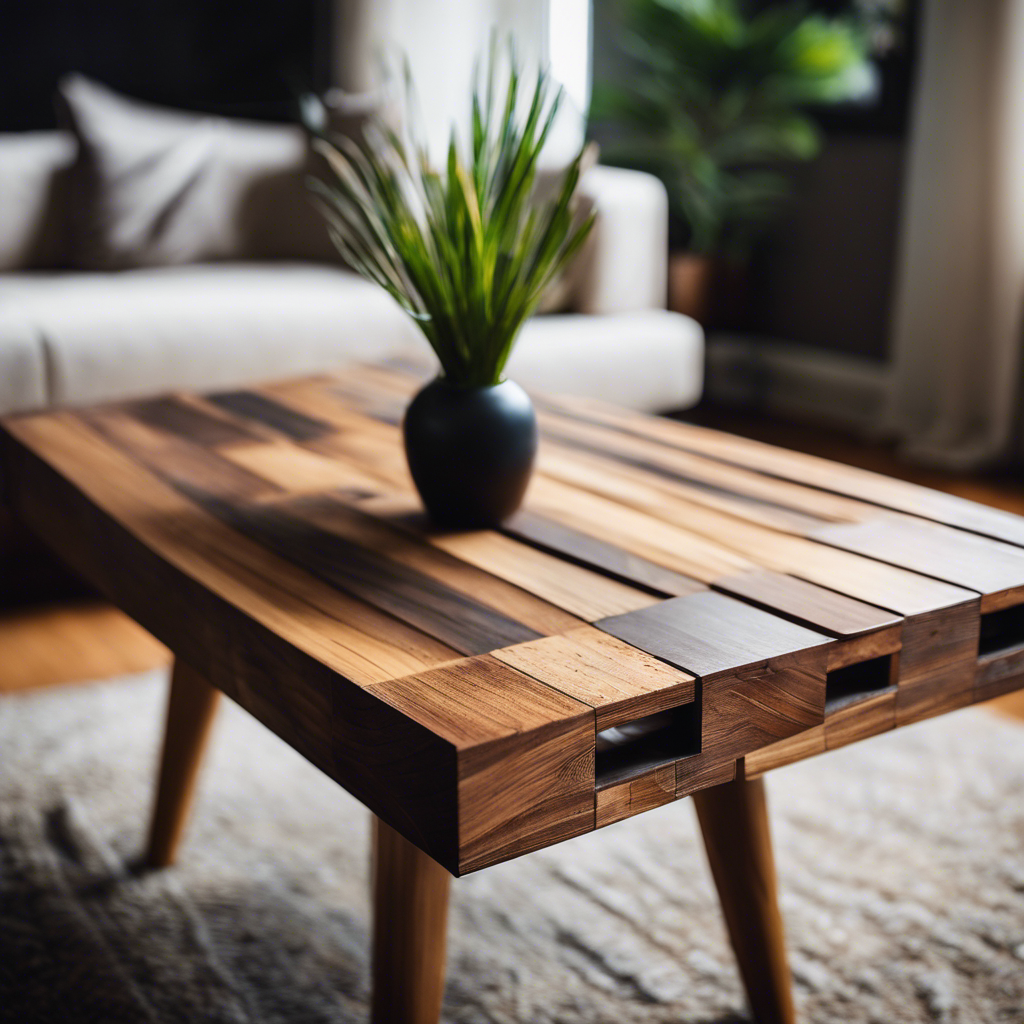
With its unique design and captivating presence, the end table effortlessly sparks engaging conversations in any room. Crafted with creativity and sustainability in mind, this conversation starter is made from repurposed scrap wood, adding a touch of eco-consciousness to your home decor.
When choosing the right materials for this stunning piece, consider the following:
- Look for high-quality, sturdy wood that can withstand everyday use.
- Consider the color and grain pattern of the wood to add character and charm to your space.
- Explore different finishes, such as staining or painting, to enhance the visual appeal.
- Get creative with the shape and design of the table, allowing it to stand out as a statement piece.
- Embrace the imperfections of the wood, as they add a unique and rustic charm to the overall aesthetic.
By repurposing scrap wood, you not only create a visually stunning end table but also contribute to sustainable living.
Frequently Asked Questions
What Materials Were Used to Build the Scrap Wood End Table?
The materials used in constructing the scrap wood end table include various types of reclaimed wood, such as pallets, old furniture, and leftover lumber. The construction process involves cutting, sanding, and assembling these pieces to create a unique and sustainable piece of furniture.
How Long Does It Take to Build the End Table?
The length of time required to construct the end table depends on various factors, including the builder’s level of expertise, the availability of materials, and the complexity of the design. However, with proper planning and the implementation of efficient building processes, it is possible to complete the project in a timely manner. To expedite the construction process, builders may consider employing certain tips and tricks, such as utilizing jigs and templates, pre-cutting and pre-drilling components, and streamlining assembly procedures. By incorporating these strategies, builders can optimize their workflow and achieve efficient and successful results.
Can the End Table Be Customized to Different Sizes or Shapes?
Yes, the end table can be customized to different sizes and shapes, providing various customization options and design variations. This feature allows for flexibility in meeting individual preferences and requirements.
Is the End Table Sturdy and Durable?
The end table’s sturdiness and durability depend on the quality of the scrap wood used. While using scrap wood has pros such as sustainability and uniqueness, it may also have cons like potential unevenness. To make the end table more durable, sanding the top and using techniques like reinforcing joints can be helpful.
Where Can I Purchase the Scrap Wood End Table?
There are several alternatives to purchasing the scrap wood end table, including exploring DIY options for building a similar end table at home. These options provide a cost-effective and customizable solution for those seeking a unique piece of furniture.
Conclusion
In conclusion, the Ultimate Scrap Wood End Table showcases the beauty and ingenuity of repurposing waste materials. Its innovative design and elegant finishes make it a standout piece in any room.
By incorporating sustainable practices and highlighting the unique character of each piece of wood, this table serves as a conversation starter and a symbol of creativity and resourcefulness.
As the saying goes, ‘One man’s trash is another man’s treasure,’ and this end table truly embodies that sentiment.


